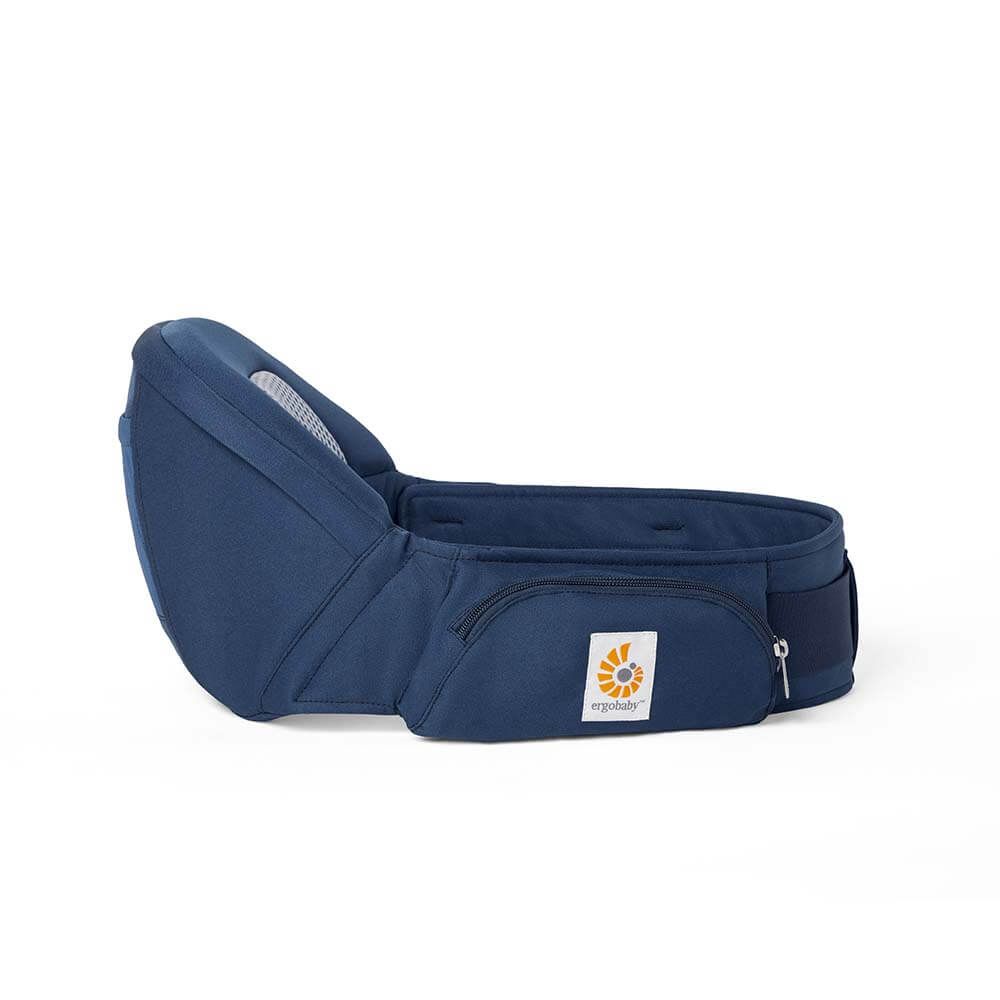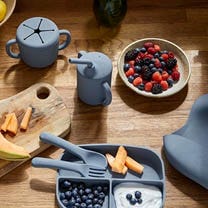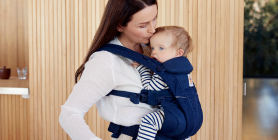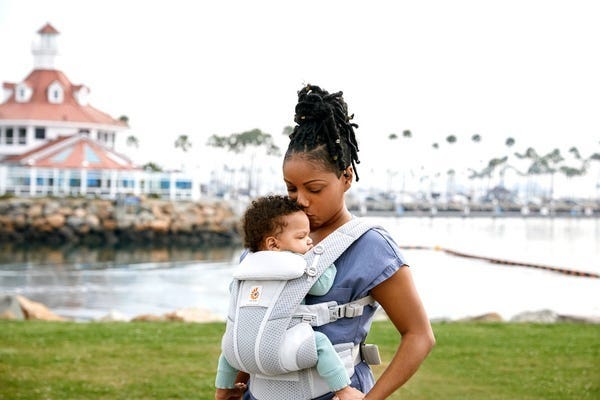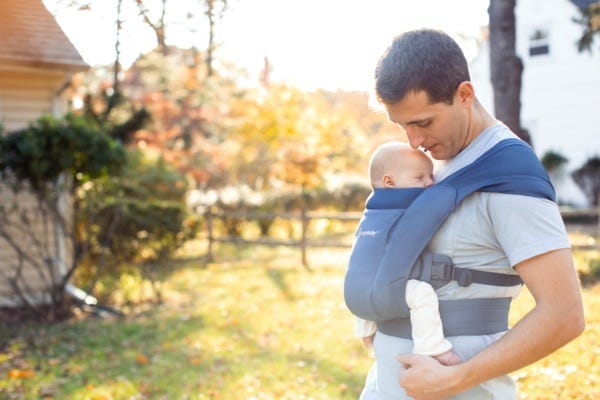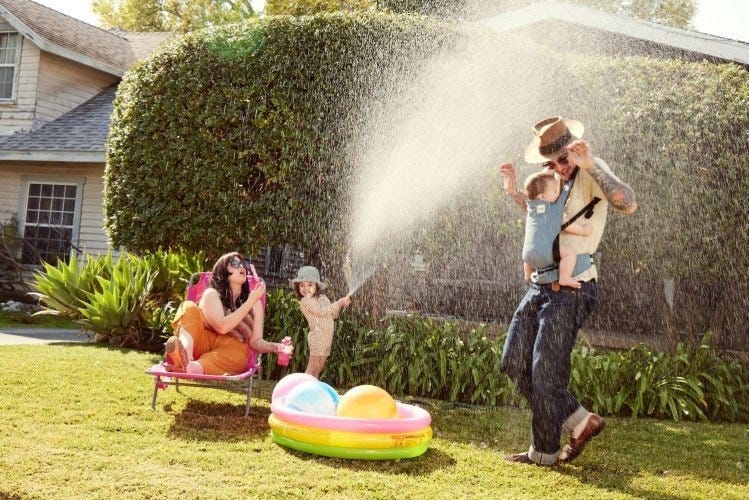Medical doctors mostly refer to hip dysplasia as DDH for developmental dysplasia of the hip. Earlier terminology was congenital dysplasia of the hip (CDH).[1] Generally it is a condition where the top of the thighbone does not fit properly in the hip socket or is unstable, dislocating to greater or lesser degrees. DDH covers a wide variety of problems with the hip joint.[2] You can visualize the hip socket as a cup and the femoral head of the thighbone as a ball. The ball needs to fit evenly in the cup and with enough room so it can rotate smoothly in multiple directions without slipping out of the cup. “Approximately one out of every 100 children is born with DDH (in some form), and around 1 out of 1,000 children has a dislocated hip at birth.”[3] “Ninety percent of the hips of newborns with mild dysplasia identified by ultrasound resolved spontaneously between 6 weeks and 6 months.”[4] This is probably because the majority of infants with DDH are female and they have looser ligaments than males. Breech babies and genetics also influence the likelihood of DDH.[5] The most common treatment for DDH is the Pavlik harness, “used on babies up to four months of age to hold the hip in place… worn full time for at least six weeks, then part time for about six more weeks.”[6] “For 90% of babies diagnosed with hip dysplasia, a Pavlic harness successfully corrects the problem.”[7] DDH can also be imposed as when an infant is swaddled too tightly. Two Harvard doctors wrote: “In Japan, a nationwide program to avoid prolonged extension of the hips and knees in swaddling resulted in a more than fivefold reduction in the rate of DDH.”[8] My clients claimed their babies slept better and cried less when swaddled. Parents often tightly swaddle their young because they think it is easier than carrying the baby in a sling and are not aware of healthy swaddling techniques. However, using a proper sling that keeps the legs bent and open wide gives multiple benefits far beyond even healthy swaddling. Jerry Karzen, a close friend and professional associate of Dr. Feldenkrais for seven years, made some significant observations while living in West Africa: Comfortable hips in Africa & America “Women in West Africa carry children in a sling creating a huge population with no hip dysplasia. Here, in western society, often kids are put in strollers, not carried. The ‘thing’ that the orthopedists put kids in (to treat DDH), is exactly like the sling that African women carry their child in all day!!!”[9] In other words, Jerry is referring to the Pavlik harness as the ‘thing,’ and noting it gives similar benefits as simply carrying your baby with the hips and legs in the frog position. Your doctor may work with you on this because “doctors take hip dysplasia very seriously in infants, monitoring the hips from birth very closely. Generally, if there is a suspicion, it is treated.”[10] The Feldenkrais® Method combines: muscular, skeletal, developmental, and environmental/social considerations in its application. By surface observations, infants may appear unaffected by external devices. Feldenkrais® practitioners adhere to as little interference in the developmental process as possible for we often cannot know how imposed mechanical limitations on infants affect other aspects of their development. Infants develop in a highly complex fashion. For example, in a 30-minute, stand-alone single session, I worked on the fingertips of a 12-year-old child with very severe cerebral palsy. Prior to the session, his vocabulary consisted of only one word, “Hi.” His mother soon phoned me in tears because for the first time in her life she heard her son greeting her when she came home, saying “Hi mom.” His language opened up and expanded as a direct result of reconnecting developmental neural pathways he had been unable to develop on his own. In my experience, The Feldenkrais® Method often creates this kind of phenomenal success. Feldenkrais® Practitioners study developmental and neurological relationships through movement lessons, discovering how it may help people relieve pain, or assist those who want to improve their skills in any given field. This includes people with a wide variety of abilities and ages, ranging from babies with cerebral palsy to Olympian athletes. During the first two years of the training we come as close as we can to simulate the experiences of the developmental process. We discover how that affects simple functions such as improved posture, turning, bending, walking, breathing, and digestion to name a few of the more obvious benefits. The following exemplifies why we prefer to be conservative with anything that would hamper the natural development of infants. (Paraphrased): Margaret Meade, Ph.D. asked Dr. Moshé Feldenkrais, “Why is it that some of the children in New Guinea cannot hop, skip or jump?” Dr. Feldenkrais responded, “There is probably an interruption in the crawling stage of their infants.” Meade exclaimed, “Oh Moshé, you’re a genius! Some people there believe if their baby crawls it can make them like the other animals.” Apparently Meade had asked many great minds this “riddle” and did not receive any plausible answers until she asked Feldenkrais. When teaching dance at the university, it was quite obvious to me which students had their developmental process tampered with. I would ask: “Were you a first born child?” “Do you have lower back pain?” “Is it difficult for you to jump or get a reasonable height when you jump?” They inevitably responded yes to such questions and then in utter amazement would ask, “How did you know?” In varying degrees, firstborn children are too often encouraged to walk before their system is ready. This causes an incomplete closure of the 5th lumbar vertebrae, inducing an inability to maintain proper balance of the extensor muscles through the back. This forms not only back problems but other difficulties as well.[11] A Feldenkrais® example of an environmental application to DDH may involve shifting elements in the environment that potentially prevent opportunities for DDH to correct itself. Likewise, we make those necessary changes to increase the opportunities for a spontaneous correction. A skilled practitioner may look to see how the infant could be positioned to encourage an opening of the affected hip. This might include but is not limited to: How she is obliged to turn her head through the movements of her eyes and ears to view or hear stimulus in the room. Do these subtle movements follow the developmental and neurological closing or opening of the affected hip articulation? In what position is the infant carried or placed? Baby-sling, stroller, car seat, or any furniture may be considered. With the muscular and skeletal considerations, we would feel the subtle quality of tonus throughout the body, especially on each side of the trunk and pelvis in relation to the affected hip. Simultaneously, we’d observe the responses of the tongue. Through subtle sensory feedback and manipulations we can encourage correct placement of the leg in the hip socket. Little creepers are forming the hip joint gradually through every stage of the developmental process starting at birth. The crawling position places the legs fully in their hip sockets. (This is not the case in walking, from a Feldenkrais® perspective.) As they are doing this, the bones continue ossifying more and more to prepare them for bearing weight through the feet and legs. Imagine how each little “bang” on the knee as it “steps” on the floor is putting pressure directly into the “cup” (acetabulum). The large variety of movements babies make, including all their beautiful sitting arrangements, are taking the ball and pressing it deeply into the cup at a variety of angles and with varying degrees of pressure. In general, The Feldenkrais® Method is quite proficient at increasing mobility through joints and finding hidden factors that prevent higher functioning. Hence, Feldenkrais® could be quite useful in some cases of DDH. My guess is that as our culture accepts better ways to care for their young, such as using ergonomical baby carriers much more and strollers much less, we will see healthier hips and bodies in our society. I have worked with many clients who suffer great pain from problematic hip joints. I have also witnessed multiple problems in children and adults who had their developmental process stunted. If you have concerns about your infant having DDH, work closely with your doctor.
Links & References: Moshé Feldenkrais, Israeli physicist & founder of the Feldenkrais® Method, designed to improve human functioning by increasing self-awareness through movement: "Find your true weakness and surrender to it. Therein lies the path to genius. Most people spend their lives using their strengths to overcome or cover up their weaknesses. Those few who use their strengths to incorporate their weaknesses, who don't divide themselves, those people are very rare. In any generation there are a few and they lead their generation." (http://en.wikipedia.org/wiki/Mosh%C3%A9_Feldenkrais) Moshé Feldenkreis bio from Anatomy Trains (anatomytrains.com): http://www.anatomytrains.com/at/library/heritage/moshe How to Swaddle a Baby Safely, from the BBC News: http://www.bbc.co.uk/news/health-128621211 Cluett, M.D., J., “What is Hip Dysplasia?” http://orthopedics.about.com/od/pediatrichipinjuries/a/dysplasia.htm (last accessed 6 October 2011).2 American Academy of Pediatrics: Homer, M.D., CJ, et al. http://aappolicy.aappublications.org/cgi/content/full/pediatrics;105/4/896, (last accessed 4 October 2011) .3 Columbia Orthopaedics, New York, NY http://www.childrensorthopaedics.com/ddh.html (last accessed 3 October 2011).4 Calonge, M.D., M.P.H., N., “Screening For Developmental Dysplasia of the Hip,” p. 2 U.S. Preventive Service Task Force For DDH in Infants http://www.uspreventiveservicestaskforce.org/uspstf06/hipdysp/hipdysrs.htm (last accessed 4 October 2011).5 American Academy of Pediatrics: Homer, M.D., CJ (pp. 2 and 8). 6 CHOP, http://www.childrenshospital.org/az/Site1024/mainpageS1024P1.html (last accessed 5 October 2011). 7 Shaughnessy, M.D., W., ”Child Born with Hip Dysplasia May Not Need Future Hip Replacement” Rochester, NY, Dec. 31, 2010, http://www.mayoclinic.org/medical-edge-newspaper-2010/dec-31a.html (last accessed 5 October 2011). 8 Mahan, M.D., M.P.H., S. T. and Kasser, M.D., J.R., http://www.happiestbaby.com/swaddling-and-hips/, Department of Orthopedics, Children’s Hospital Boston, Boston, Massachusetts; Department of Orthopedic Surgery, Harvard Medical School, Boston, Massachusetts 9 Interview with Janis Langohr, M.D., Pediatrician, 8 October 2011. 10, 11 Interview with Jerry Karzen, Senior Feldenkrais® Trainer worldwide, 2 October 2011.
Emotional Benefits of Getting Outside
Spending time in nature with your baby can strengthen the bond between you. The simple act of holding your baby close, feeling their warmth, and sharing new experiences together can create strong emotional connections. It’s also a wonderful way to reduce stress and improve your mood. When my littles were extra fussy, I’d take a walk around the neighborhood. Even though I don't live in an area with trails and surrounded by nature, simply behind outside changed everything. A little vitamin D does wonders!
Cognitive Development
Nature is a sensory wonderland for babies. The different sights, sounds, and smells can stimulate your baby’s senses and promote cognitive development. Watching leaves rustle, hearing birds chirp, and feeling the texture of a tree bark can all contribute to their learning and development.
All About Baby Carriers for Nature Adventures
Choosing the Right Baby Carrier
When it comes to selecting the best baby carrier for summer adventures, there are several options to consider.
Types of Baby Carriers:
- Wraps: Perfect for newborns, providing a snug and secure fit.
- Slings: Ideal for quick and easy use, offering good ventilation.
- Soft Structured Carriers: Versatile and comfortable for both parent and baby, suitable for longer trips.
Factors to Consider:
- Baby’s Age and Weight: Ensure the carrier is appropriate for your baby’s size and weight. For example, Ergobaby’s Embrace Newborn Carrier is perfect for the fourth trimester where baby is small and you’re looking for an easy way to stay close. As they grow, you’ll want to upgrade to an all-position carrier that’s meant for growing babies.
- Parent’s Comfort and Ergonomics: Look for carriers with padded shoulder straps and lumbar support if you’re planning on longer outings.
- Ease of Use: Choose a carrier that is easy to put on and take off.
- Climate and Breathability: Opt for carriers made of breathable fabrics to keep you and your baby cool in hot weather.
Safety Tips:
- Proper Positioning: Ensure your baby is seated correctly, with their legs in an "M" position and their head should be close enough to kiss.
- Checking for Wear and Tear: Regularly inspect your carrier for any signs of damage.
- Ensuring Adequate Support: Make sure the carrier provides proper support for your baby’s head and neck.
Exploring Nature with a Baby Carrier
Ideal Spots for a Nature Walk with Baby
- Parks and Gardens: Great for leisurely walks and picnics.
- Nature Trails and Forests: Perfect for more adventurous outings.
- Beaches and Lakesides: Wonderful for enjoying the water and sand, with the right carrier.
Activity Ideas
- Hiking: Enjoy a scenic hike with a hiking baby carrier that offers support and storage.
- Bird Watching: Use your carrier to keep your baby close while you explore and observe wildlife.
- Picnics: A carrier can free up your hands, making it easier to carry picnic supplies.
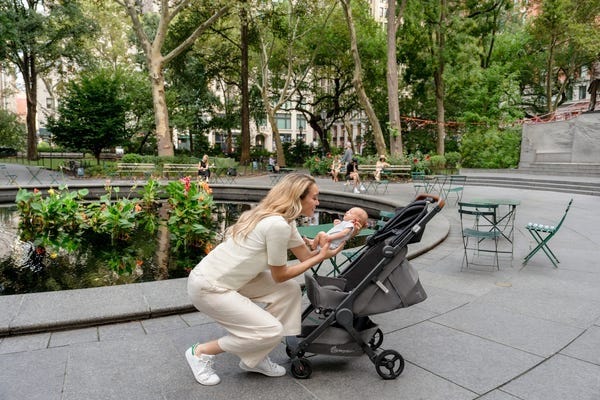

Advantages of Using Strollers for Nature Adventures
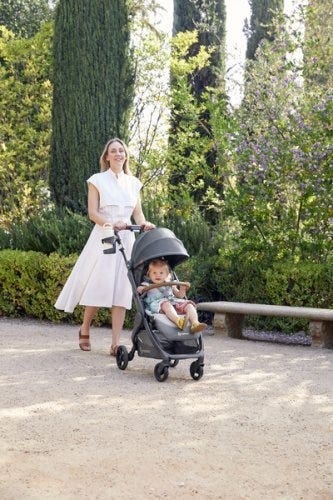

While baby carriers are fantastic for mobility and closeness, depending on the adventure of choice you might want to be a stroller along too.
There are a LOT of baby stroller options on the market. So we understand how confusing it can be to choose the one that’s right for your family. Not only are there a variety of brands, but a variety of strollers that serve different purposes.
There are a few types of strollers on the market:
- Full-sized stroller: This is typically the stroller parents thing of buying for all its versatility.
- Lightweight or umbrella stroller:These compact strollers are perfect for on-the-go adventures.
- Jogging stroller: Designed for parents who want to combine fitness with outdoor adventures.
- Double stroller: Designed for parents with multiple kids, especially twins.
- Car seat carrier: These strollers connect to a specific car seat. We don't typically recommend these as they can be unsafe for baby and uncomfortable for parents who are pushing.
Learn more about the types of strollers and which one would be best for you.
Benefits of Bringing a Stroller
- Storage Space for Gear: Ample room for carrying all your essentials like a diaper bag, beach toys and more.
- Shade and Weather Protection: Built-in canopies to shield your baby from the sun when they are lounging.
- Options: If you have more than one kid, you can stroll with one and carry the other. Or, if you’re getting warm or your little one is getting fussy, you can switch up their position from stroller to carrier or vice versa.
Safety Tips for Strollers
- Ensure your stroller is in good working condition. Make sure buckles are still buckling and that there are no rips or holes that could compromise your baby’s safety.
- Use sunshades or bug nets to protect your little one’s skin.
- Securing the baby properly: always buckle up your baby for safety even if you think they are old enough to go without the buckle.
Combining Baby Carriers and Strollers
For the ultimate flexibility, consider using both a baby carrier and a stroller on your outings.
Combining both options allows you to adapt to different situations. Use the carrier for more rugged trails and switch to the stroller for smoother paths or when your baby needs a nap.
Transition Tips
- Smooth Transitions: Plan stops where you can easily switch from carrier to stroller.
- Pack Light: Only bring essentials to make transitions easier.
Tips for a Successful Adventure
Planning Ahead
- Route Planning: Choose baby-friendly trails and parks. Check local mom groups or outdoor groups and get recommendations for the best outings for kids.
- Check Weather Conditions: Avoid extreme heat or unpredictable weather. Even with our most breathable carriers, when it’s hot, it’s hot. And having two bodies against each other in the heat will be naturally hot and sticky already.
- Packing Checklist: Include diapers, snacks, water, sunscreen, and a first-aid kit. These all-position carriers have storage pockets where you can fit some of the items easily!
- Stay Hydrated and Nourished: Pack healthy snacks to keep energy levels up and bring plenty of water for both you and baby.
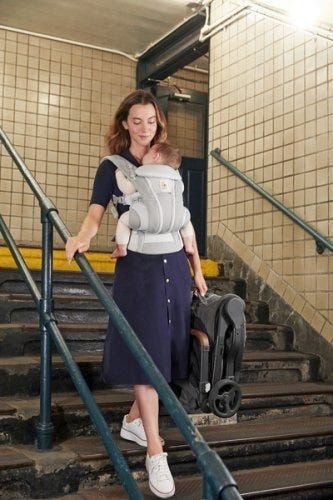

Summer adventures with your baby are a wonderful way to create lasting memories and enjoy the beauty of nature together. From baby carriers to strollers, Ergobaby products are designed to provide comfort and ease for both you and your little one. So, gear up, get outside, and explore the world with your baby by your side.
Ready to embark on your own summer adventures? Check out Ergobaby’s range of baby carriers and strollers to find the perfect match for your family’s needs. Visit our website today and start planning your next outdoor excursion!





